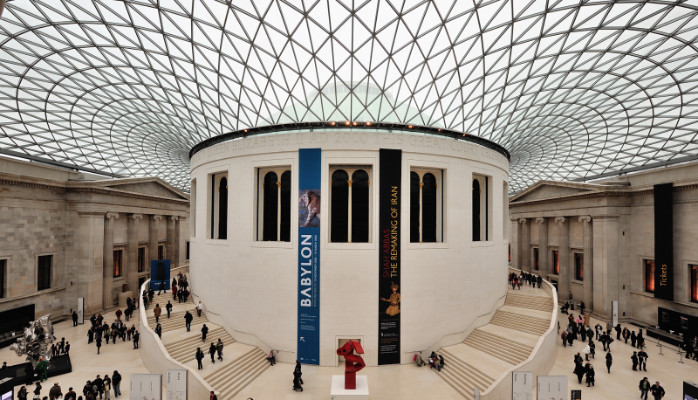
Museums 2.0: When Art meets (iBeacon) Tech.
Museums have always intrigued me. I feel they cater to the fundamental makeup of all humans, that deals with - curiosity, exploration and a sense of discovery. Museums are a place of heritage, a site to showcase the past, and exhibit memories of older generations; but does that mean they cannot be interactive and futuristic? Well, thankfully they can.
iBeacon technology, that is fast gaining popularity among museums and galleries makes this possible. The technology is a natural fit for museums as it can fill several important roles, such as analysing data of visitor habits and traffic, offering additional digital content or acting as a tour guide for specific exhibitions for visitors on mobile. In this post we will discuss how beacons can help design a museum of the future. Here are a few things museums can do using beacons:
1. Act as a Tour Guide: Beacons can be used to trigger messages to divulge more details about an exhibit a visitor is looking at.
The notification sent could be: “Want to know the history of this artefact?” or “Would you like to see how this statue has transformed over the years?”. Clicking on the notification could take the visitor to a slideshow, an audio clip, or a video giving more details on the history of the piece, more information about the artist, and also what was happening in the world during that time.
Example: The Cleveland Museum of Art is tapping the technology to deliver more information about its art pieces to customers’ mobile devices, via the museum’s ArtLens mobile app.
2. Measure Analytics: Beacons can be used for gathering data to gain insights on visitor behaviour and use it to improve exhibit locations and museum layouts to enhance the overall visitor experience.
The most important metric that can be measured using beacons is: visitor dwell time, that is, how much time visitors spend at different locations of the museum. Using this you can find: i) most popular exhibits, ii) if an exhibit is popular by itself or if it is because of its placement at a particular location iii) most crowded spots. Visitors' entire visit can be tracked, providing invaluable data about how long they stayed, which sections they visited, and countless other behaviour metrics regarding their visit such as time spent at each section, interests, artefact purchase history etc.
Example: Solomon R. Guggenheim Museum in New York
3. Enhance Interactivity: Museums can use beacons to enhance interactivity. This could be by organising games and scavenger hunts, or enabling visitors to interact with staff.
i) Gaming: Visitors to the Philips Museum, Eindhoven, are invited to play an interactive game called “Mission Eureka” as they walk around the exhibits. Teams are presented with ‘challenges’ that they have to solve, such as finding out how LED light works and what X-rays do, for example.
ii) Interact with Staff: Brooklyn museum, New York use beacons to find out exactly where visitors are and answer their queries about art displays. Their iBeacon integrated app enables experts to answer visitors’ questions via mobile devices.
4. Social Options: Social media provide access to a much wider audience, and can extend the museum visit by allowing a user to continue the aesthetic experience after leaving the museum. With Facebook’s roll out of its Place Tips feature, an option that enables beacons to send users location-specific information, more museums will use iBeacon technology to access the wide reach of consumers using the Facebook app.
Example: The Metropolitan Museum of Art, that is also a Facebook Place Tips launch partner
5. Other Uses:
i) Provide a quick overview of all exhibits with the welcome message - this helps visitors plan their trip better. Also inform visitors about other facilities, such as cafeteria, porchways, gift shops
ii) Get rid of manual entry tickets - Visitors can buy tickets via the app, entry is allowed through app recognition
Thus, beacons are a great tool for enabling digital content or services to enrich a physical world experience. They can be used to gain insights on visitor behaviours, trigger contextual information and generate more revenue.
Before implementing a beacon strategy for your museum, however, you need to consider two questions: Does the technology deepen the experience, or does it diminish it? Do we control it, or does it control us?
If you are planning a beacon pilot, take a look at the Beaconstac Kit which includes everything you need to get started. Using the Starter kit you can set up your own campaign, without a developer’s help!
Librarian Specialising in Communications and Library Marketing
9yI think a few museums use volunteers to help them cover what you have suggested in numbers 1,3 and 4. Do you think this technology would work well with museum volunteer communities or replace them?
Dir Com et Art Thérapeute 💫 Fondatrice de B.Art.
9yVery interesting article!
Manager - Corporate Sales at Naukri Campus | Info Edge India Limited | Ex BYJU's | Ex Whitehat Jr | ITM B-School |
9yvery informative & nicely written